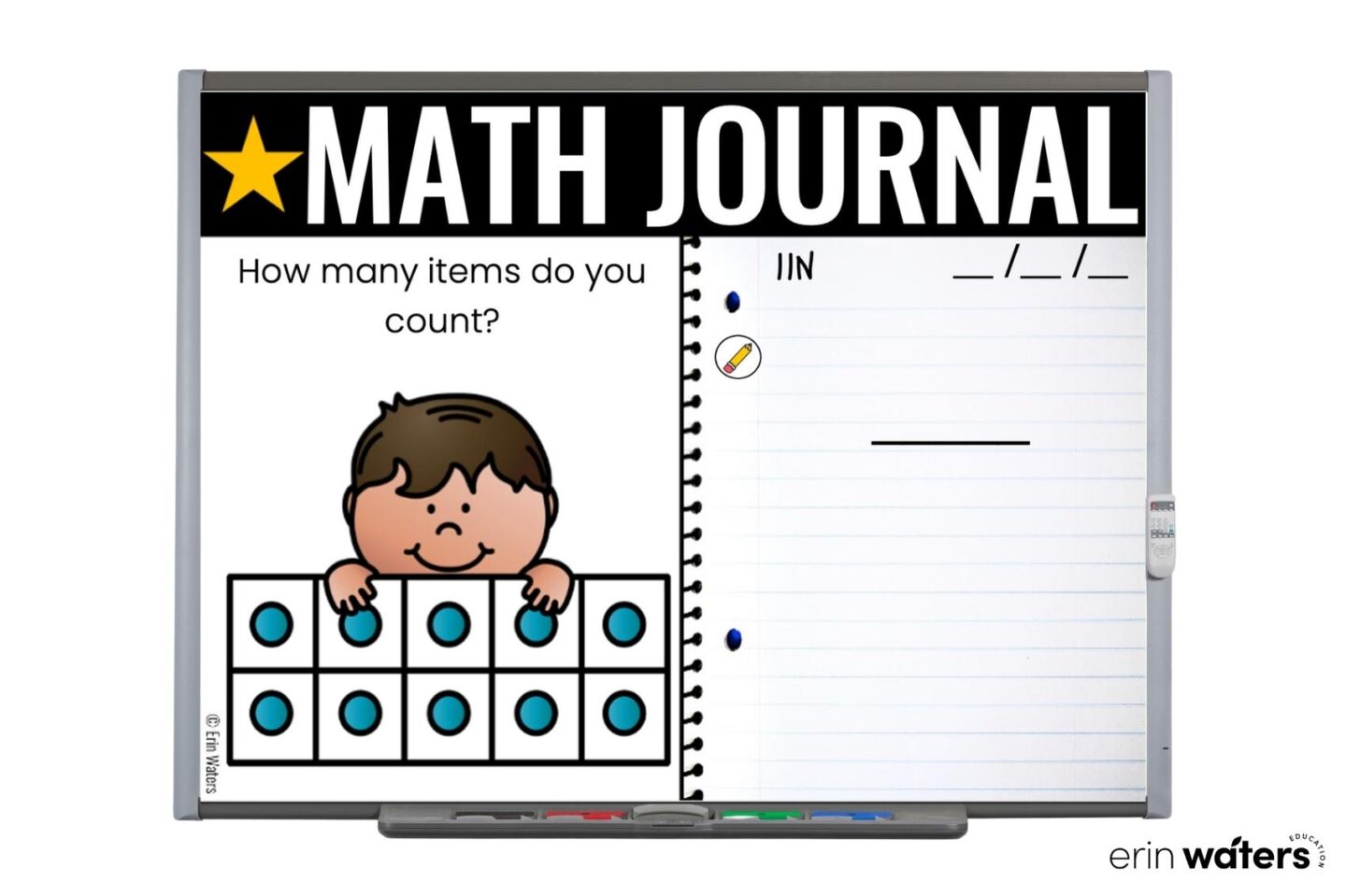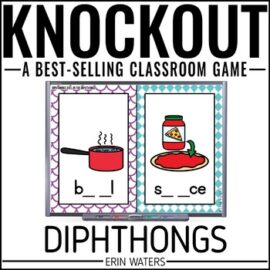Math centers are an essential component of any kindergarten classroom. These centers provide young learners with hands-on opportunities to practice and develop important math skills. However, creating a kindergarten math center that is both engaging and meaningful can be challenging for educators. Many math centers can quickly turn into busy work that doesn't promote actual learning, leaving both students and teachers feeling frustrated.

One solution that has worked well in my classroom is incorporating paperless math journal prompts into my math center rotation. These prompts provide a fun and creative way for students to apply math skills while keeping them engaged and interested.
Using Journals as a Kindergarten Math Center: How to Introduce Them
The key to making this approach work is to introduce it as a whole-class activity for the first quarter or two of the school year. This allows students to become familiar with the format and expectations of the activity. Once they are comfortable with the process, it can be added as a station in their math center rotation, allowing them to complete the prompts independently.

Using Journals as a Kindergarten Math Center: The Benefits
One of the benefits of incorporating math journal prompts into math centers is that it promotes creativity and curiosity in young learners. Math journals encourage students to think outside the box and approach math problems in new and creative ways. This helps them develop a love for math, which will serve them well as they progress through their academic careers.
Another benefit is that math journal prompts are paperless, which can save teachers valuable time and resources. Rather than having to print out worksheets or other materials for each student, teachers can simply provide students with a digital prompt that they can complete on their devices.
In addition, using math journal prompts as a center activity is an excellent way to track student progress throughout the year. As students complete each prompt, teachers can see visible growth in their work. This provides valuable insights into each student's individual strengths and areas for improvement, which can help inform instruction.

Using Journals as a Kindergarten Math Center: Choosing Your Prompts
When implementing math journal prompts into your kindergarten math center rotation, it's important to choose prompts that are appropriate for your student's skill level. For example, younger students may need prompts that focus on basic math skills like counting and number recognition, while older students may benefit from prompts that focus on more complex skills like addition and subtraction.
One way to ensure that your math journal prompts are appropriate for your students is to align them with your state or district's math standards. By doing so, you can ensure that your students are practicing and developing the skills they need to succeed academically.
Overall, incorporating paperless math journal prompts into your kindergarten math center rotation can be a highly effective way to engage young learners and promote meaningful learning. By encouraging creativity and curiosity, tracking student progress, and providing an efficient and paperless way to practice math skills, math journal prompts can help students develop a lifelong love for math.
If you're interested in incorporating math journal prompts into your kindergarten math centers, you may want to consider purchasing a set of math journals designed specifically for kindergarten students. These journals are filled with engaging prompts that are aligned with kindergarten math standards, making it easy for teachers to integrate them into their math center rotation.
In conclusion, kindergarten math centers are an essential component of any kindergarten classroom. However, creating engaging and meaningful math centers can be challenging for educators. By incorporating paperless math journal prompts into your math center rotation, you can provide your students with a fun and creative way to practice math skills while promoting curiosity and creativity. With a little planning and effort, you can create a math center that your students will look forward to and that will help them develop the skills they need to succeed academically.
Want to read more about teaching math in the early grades? Check these out:
5 Math Ideas to Maximize the Math Magic in Your Classroom
3 Genius Math Review Games That Will Wow Your Students
The Best Math Game for Making Learning Fun












 Arm you with high-quality tools: Sleep peacefully at night knowing you’re doing what’s best for your students.
Arm you with high-quality tools: Sleep peacefully at night knowing you’re doing what’s best for your students. Save your energy: Provide resources that cost you little energy (that stuff is precious)---but have high impact on your students.
Save your energy: Provide resources that cost you little energy (that stuff is precious)---but have high impact on your students. Light your spark: Putting fun back into your classroom after the hardest teaching years can be just what you and your students need.
Light your spark: Putting fun back into your classroom after the hardest teaching years can be just what you and your students need.
Leave a Comment